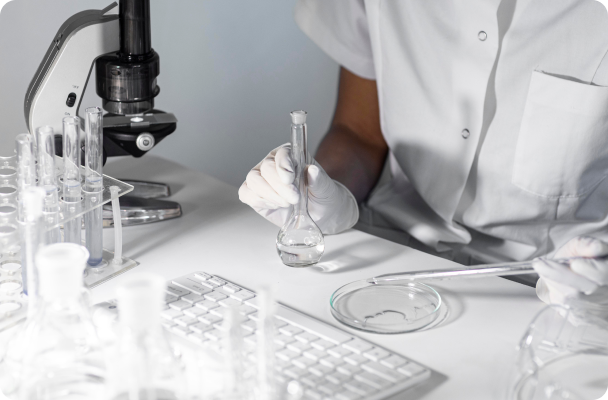Home › Biological sample › Infectious diseases › Streptococcus
Streptococcus biological samples
For research applications
The development of drugs and diagnostic tests for the treatment and detection of streptococcal infection requires conducting studies on biological samples obtained from patients infected by streptococcus.
Here's a brief overview of various infectious diseases caused by streptococcus and how the service provided by Labtoo contributes to accelerating R&D projects in the pharmaceutical industry.


Are you looking for biological samples from patients infected by Streptococcus?
What are the different types of Streptococcus?
Streptococci are facultative anaerobic, Gram-positive bacteria, devoid of flagella, often occurring in chains of cocci. They are part of the human commensal flora, comprising both pathogenic and non-pathogenic strains. Ubiquitous in nature, they colonize various human body sites. Subcategories are classified based on serological criteria, particularly the polysaccharides present on their cell surface.
The most pathogenic groups include:
Group A Streptococcus
Group A streptococci (Streptococcus pyogenes) are primarily transmitted among infected individuals and are commonly found in the throat or on the skin.
Implicated in various generally benign infections such as pharyngitis, scarlet fever, or skin infections, they can also cause more severe invasive infections such as necrotizing fasciitis, puerperal infections, or meningitis.
Group B Streptococcus
Group B streptococci (Streptococcus agalactiae) are chiefly associated with severe neonatal infections like septicemia, pneumonia, and meningitis. They may asymptomatically colonize the gastrointestinal tract and can inhabit the female genital tract, thus facilitating vertical transmission during childbirth.
Group B streptococci can also cause infections in adults, especially those with underlying medical conditions.
Pneumococci
Primarily linked to a variety of infections including pulmonary, meningeal, bloodstream, and otic infections.
In adults, they are the leading cause of bacterial pneumonia and meningitis.
Vaccination against pneumococci is recommended to mitigate the risk of severe infections, particularly in at-risk populations.
| Streptococcal Group | At-Risk Individuals | Typically Associated Symptoms |
|---|---|---|
| Group A (Streptococcus pyogenes) | Children and adults of all ages | Sore throat (pharyngitis), fever, swollen lymph nodes, skin infections (impetigo, cellulitis, erysipelas), invasive infections (septicemia, necrotizing fasciitis) |
| Group B (Streptococcus agalactiae) | Newborns, pregnant women, adults with underlying medical conditions | Neonatal infections (septicemia, pneumonia, meningitis), adult infections (skin and soft tissue infections, urinary tract infections, bacteremia) |
| Group C and G (Streptococcus dysgalactiae and Streptococcus anginosus) | Adults of all ages, immunocompromised individuals | Upper and lower respiratory tract infections (pharyngitis, sinusitis, pneumonia), skin infections, invasive infections (bacteremia, abscesses) |
| Other Groups (Streptococcus pneumoniae, Streptococcus mutans, etc.) | Children, elderly, immunocompromised individuals | Pneumonia, meningitis, middle ear infections (otitis media), sinusitis, dental infections |

Explore Labtoo's Service for Your Biological Sample Research
Labtoo assists you in sourcing biological samples from patients with streptococcal infections. Our team manages the entire project of transferring biological materials from inception to sample delivery.
- Feasibility assessment of sample availability or clinical collection from referenced clinical centers
- Validation of regulatory aspects
- Establishment of a contractual framework
- Dispatch of desired samples under appropriate conditions
- Transfer of associated clinical data
- Additional analytical and experimental services
Types of available samples
Urine
In the context of a urinary tract infection caused by a streptococcus, a urine sample is collected to perform a cytobacteriological examination of urine (CBEU) in order to confirm the presence of the pathogenic agent. These samples can subsequently be preserved under appropriate conditions for future research projects.
Cerebrospinal fluid (CSF)
For cases of central nervous system infections, such as meningitis.
Other
Other types of specimens such as nasopharyngeal, respiratory, or vaginal swabs are also commonly utilized in infectious disease research
- Fresh Tissues: Dermal samples, such as wound or abscess specimens, are often collected to identify and study the presence of this pathogenic bacterium in skin infections.
- Frozen Tissues (OCT and FF)
- FFPE Tissues
- Whole blood: from patients with streptococcal infection, particularly those who have developed bacteremia.
- PBMC (Peripheral Blood Mononuclear Cells)
- Plasma
- Serum
Typical associated clinical data
-
- Age
- Gender
- Ethnicity
- Detection Method
- Serological result
- Bacterial Load
- Follow-up Treatment
- Simptomatology
- Medical Imaging
- Positivity/Negativity for certain Infections
- Other Data (upon request)

Labtoo identifies clinical sites that can prepare and transfer sample collections tailored to your specific project needs.
Contact our team to discuss your project.
Send your request to our team:
The symptoms of streptococcal infection
Symptoms may vary depending on various factors such as the group of the infectious streptococcus, the health status of the patient, or the bacterial load present in the body. However, the most common symptoms include:
Streptococcal pharyngitis
It is characterized by inflammation of the throat and tonsils, swollen neck glands, headaches, and fever.
Scarlet fever
It typically presents with a reddish rash on the body, accompanied by symptoms such as fever, sore throat, and general malaise.
This disease primarily affects children but can also affect adults.
Impetigo
It is a contagious skin infection characterized by red, oozing, and crusted skin lesions, often localized around the face, arms, and legs.
Shortness of breath
Difficulty breathing is a common symptom of pneumonia with pneumococcal infections.
Bluish skin
Characteristic symptoms of Group B streptococcal infections in newborns, often accompanied by a fever spike and respiratory distress.

Diagnosis and treatment for streptococcal infections
The diagnosis of a Streptococcus infection is typically carried out using a systematic approach. Initially, a sample is collected (saliva, nasopharyngeal swab, contaminated skin, etc.), followed by bacterial culture on an appropriate culture medium. For cases of Group A Streptococcus, a rapid antigen test may also be administered for swift diagnosis.
In pregnant women nearing childbirth, frequent screening for Group B Streptococcus is often conducted to prevent neonatal complications.
Subsequently, serological and/or molecular tests are often undertaken to specify the specific group of Streptococcus involved in the infection.
The treatment of streptococcal infections primarily relies on the use of antibiotics, such as amoxicillin or penicillin, aimed at eradicating the infection. Symptoms such as fever and pain are generally managed with nonsteroidal anti-inflammatory drugs and acetaminophen. In cases of severe necrotizing fasciitis, surgical intervention may be necessary.
Although specific vaccines against Group A and Group B Streptococcus are not available, vaccination against pneumococcal infections is recommended, particularly for infants and the elderly, to reduce the risks of complications associated with these bacterial infections.
Complications of Streptococcal infections
Complications of streptococcal infections can lead to various potentially life-threatening problems such as:
Spread of the infection
To adjacent tissues, including the sinuses, and in severe cases, can lead to septicemia and involvement of distant organs such as the kidneys (glomerulonephritis).
Necrotizing fasciitis
Also known as "flesh-eating disease," is a condition characterized by necrosis of infected tissues, including muscles, adipose tissues, and skin.
Treatment typically involves surgical intervention to remove necrotic tissues. This condition is often associated with high fever and intense pain, accompanied by significant edema in the affected area.
Streptococcal toxic shock syndrome
Although rare, represents a serious complication caused by a toxin produced by Group A streptococci.
It presents with high fever, diarrhea and vomiting, dizziness, wound gangrene, and acute respiratory distress syndrome, with a high mortality rate in the absence of treatment.



